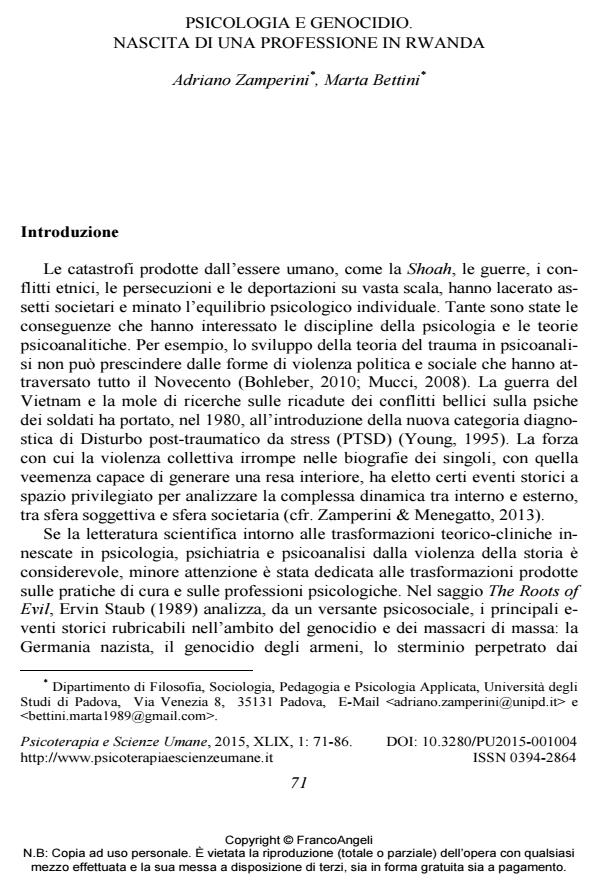Psicologia e genocidio. Nascita di una professione in rwanda
Titolo Rivista PSICOTERAPIA E SCIENZE UMANE
Autori/Curatori Adriano Zamperini, Marta Bettini
Anno di pubblicazione 2015 Fascicolo 2015/1
Lingua Italiano Numero pagine 16 P. 71-86 Dimensione file 83 KB
DOI 10.3280/PU2015-001004
Il DOI è il codice a barre della proprietà intellettuale: per saperne di più
clicca qui
Qui sotto puoi vedere in anteprima la prima pagina di questo articolo.
Se questo articolo ti interessa, lo puoi acquistare (e scaricare in formato pdf) seguendo le facili indicazioni per acquistare il download credit. Acquista Download Credits per scaricare questo Articolo in formato PDF

FrancoAngeli è membro della Publishers International Linking Association, Inc (PILA)associazione indipendente e non profit per facilitare (attraverso i servizi tecnologici implementati da CrossRef.org) l’accesso degli studiosi ai contenuti digitali nelle pubblicazioni professionali e scientifiche
Tra aprile e luglio 1994, il Rwanda patì un genocidio che si distinse per intensità e gravità della violenza prodotta, poiché in questo breve lasso di tempo furono uccise circa un milione di persone. Dato il gran numero di rwandesi che hanno vissuto gravi eventi traumatici, non è certo casuale che, all’indomani del 1994, numerosi studi epidemiologici abbiano evidenziato elevati tassi di problemi di salute mentale e psicosociali nella popolazione del Rwanda. I programmi sociali e i servizi di salute mentale attuati per aiutare i rwandesi traumatizzati dal genocidio evidenziano il ruolo della psicologia clinica come professione. Questo articolo svolge alcune riflessioni sulle potenzialità e le sfide poste dall’attuazione di interventi psicologici a sèguito di un genocidio, concentrandosi sulla terapia di gruppo. In particolare, viene analizzata la posizione assunta dagli psicologi clinici tra l’occidentale "medicalizzazione" dei disturbi mentali e i processi di guarigione tradizionali.
Parole chiave:Genocidio, trauma collettivo, professione di psicologo, Disturbo post-traumatico da stress (PTSD), Rwanda
- Testimony of terrorism: Civic responsibility and memory work after a political massacre Adriano Zamperini, Letizia Passarella, in Memory Studies /2019 pp.721
DOI: 10.1177/1750698017720255
Adriano Zamperini, Marta Bettini, Psicologia e genocidio. Nascita di una professione in rwanda in "PSICOTERAPIA E SCIENZE UMANE" 1/2015, pp 71-86, DOI: 10.3280/PU2015-001004